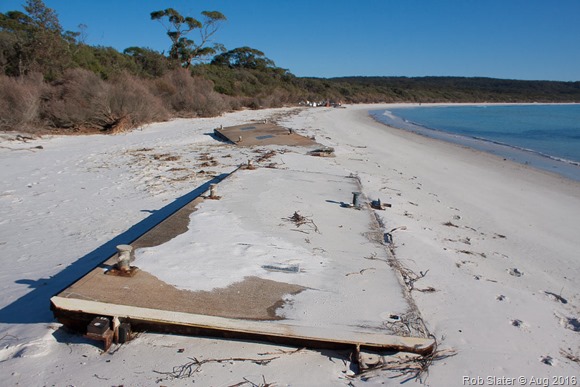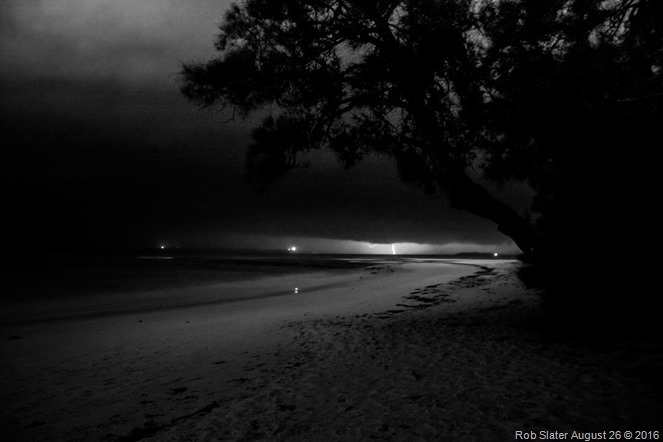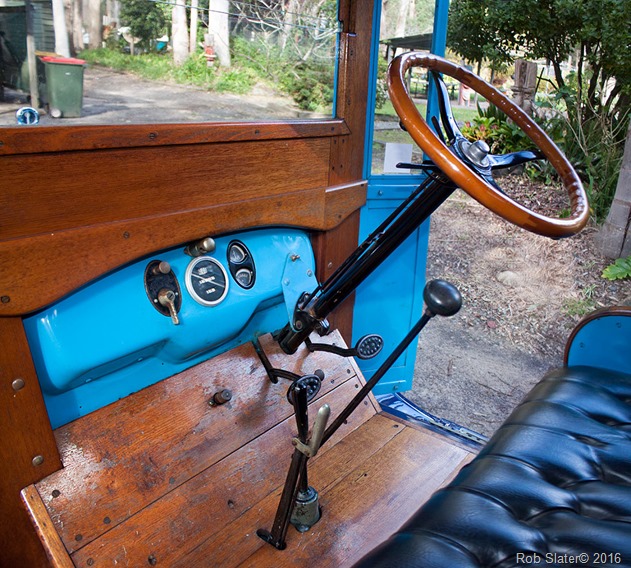| Morrison’s and Sons butchery Huskisson early 1930’s Managed by G. Vost and later purchased by G. Vost., |
 |
31 August 2016
Huskisson through time.
29 August 2016
Shark Net Beach.
| Im sure the many visitors to the area who take a leisurely stroll along Sharknet Beach, must wonder what the two large concrete blocks are that sit proud of the rocks at low tide and flank either side of the beach. I took this shot recently, you can just make out the second block on the other side of the bay. It was used as one of the fixing points for the Shark Net that use to be erected every summer to protect the tourists and locals from the many sharks that use to be seen in the bay. |
 |
| Here is an image from an old postcard showing the net in position. |
 |
| Shoalhaven Telegraph November 1932. |
| The following article in 1932 shows the desire by the Local Huskisson and Jervis Bay Improvement League to have the baths erected. |
 |
| Nowra Leader October 1937. By 1937 the baths were in place and were being well used by locals and visitors alike. The article also mentions the Huskisson Golf Links which I have already covered in a previous post. – Continue Reading. |
 |
 |
Huskisson through time.
28 August 2016
Late winter storm Jervis Bay.
22 August 2016
S.S. Kooraka in peril off Jervis Bay.
| July 1947. Kooraka saved from disaster by the actions of the captain and crew of the trawler Korowa. | |||
| S.S Kooraka. | |||
 Public Domain - REF: SLSA Public Domain - REF: SLSA | |||
| 8.30pm July 17 - in dark and dangerous conditions the 300 ton S.S Koraka was caught in a fierce storm 6 miles off Jervis Bay, pounded by 30 to 40ft waves breaking onto it’s hatches, the Kooraka’s steering gear broke away under the strain of the relentless pounding. | |||
| |||
| 4. 30 a.m. - The trawler Korowa towed the Kooraka safely into Sydney Harbour. | |||
 | |||
|
| |||
 | |||
| Paying high tribute to the captain and crew of the steam trawler Korowa, Mr Justice Abbott awarded 3,300 pounds to it’s owners and 2,100 pounds to the ship’s company, for services rendered in the salvaging of the South Australian vessel Kooraka. | |||
|
| |||
| |||
 The Kooraka, 300 gross tons. Lb: 135 x 24 ft. (41.2 x 7.6 metres). Steel, single screw motorship built by George Brown & Co in Greenock, Scotland, in 1925. Arrived Australia August 1925 for Coast Steamship Ltd. Day passengers only (10). Serviced Yorke Peninsular run on an irregular basis. Requisitioned as RAN Minesweeper during World War 2. Ref: Flotilla | |||
|
| |||

| |||
|
|
19 August 2016
Wreck of the William Coombe
17 August 2016
Old Barrels Exposed
| Two local friends, Nina and Michael Strachan, were exploring the north side of the bay on the weekend 13/14th August 2016 - in their canoes and came upon a very interesting discovery . |
 |
 |
| Read more on Captain Kinghorn and whaling in Jervis Bay. |
| Thank you Michael and Nina for sending us these photographs. |
 |
11 August 2016
Advertising
| Researching old south coast newspapers you will come across this type of advertising time and again.. This was a one of many advertisement that promised amazing cures for all sorts of ailments. |
 |
| Advertising for Ayre’s Sarsaparilla appeared in many local Shoalhaven newspapers over many years. In fact, this remedy was nothing more than a simple beverage of sweetened, herb-flavored water. It was dispensed as a "tonic" (still the general term for soda pop in certain areas of the country) but it was little different from the drink we now call root beer”. |
10 August 2016
Take a trip back in time.
9 August 2016
Working barge – Huskisson.
Wrecked Navy Yacht.
| Air lifted off Hyams beach today - August 8th 2016. |
 HMAS Creswell. click to enlarge all images.. HMAS Creswell. click to enlarge all images.. |
| June 2016 The headlands and narrow entrance to the bay offered little protection as the huge north swell smashed straight into H.M.A.S Creswell. The base suffered a lot of damage to it’s infrastructure, least of which was two of the Navy’’s training yachts Alexander and Friendship. They were behind the breakwall and secured to large floating concrete pontoons, thought to be safe. During the height of the storm large waves rolled right over the breakwall and dislodged the concrete pontoons from their moorings. The pontoons are fixed to large steel pylons driven deep into the sea bed, these have steel railway track like slides running vertically down the sides that are designed to let the 17 ton sealed concrete pontoons freely rise and fall with the tides and swell. The height of the steel pylons is around 3 meters above water level, for the waves to come over the wall with such force and lift these 17 ton pontoons clear off the top off the pylons is quite amazing. The two yachts attached to the pontoons were then ripped out of the harbour and started to drift with the wind and driving swell towards the beach. The men from DMS, quickly followed in a work boat trying to get a rope onto the yachts and haul them back to safety. With great difficulty they managed to do this with the yacht Friendship, but unfortunately, despite successfully attaching tow ropes to Alexander she was found to be still attached to the pontoons, it was decided they had no choice but to abandon the attempt in the dangerous deteriorating conditions. They were forced to stand off, and watch helplessly as Alexander and the pontoons were driven onto Hyams Beach not far from the base. Once the storm had subsided an inspection was made, and the yacht was found to be beyond recovery. |
 The once beautiful yacht Alexander shown here cut into pieces ready for the lift. The once beautiful yacht Alexander shown here cut into pieces ready for the lift. |
 Preparing the pieces for the lift. Preparing the pieces for the lift. |
| August 8th. |
 The helicopter on arrival. The helicopter on arrival. |
 |
| Getting ready for the first lift. |
 Staff and onlookers. Staff and onlookers. |
 |
| Bow section being lifted. |
 |
 |
 |
| another section of hull on it’s way to be scrapped. |
| The 17 ton Pontoons. |
 Two of the four pontoons buried deep in the sand. Two of the four pontoons buried deep in the sand. |
 |
|
|
 |





















